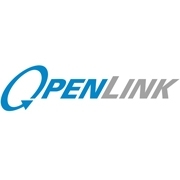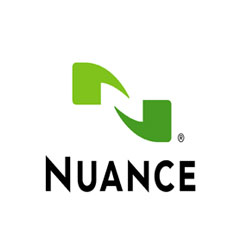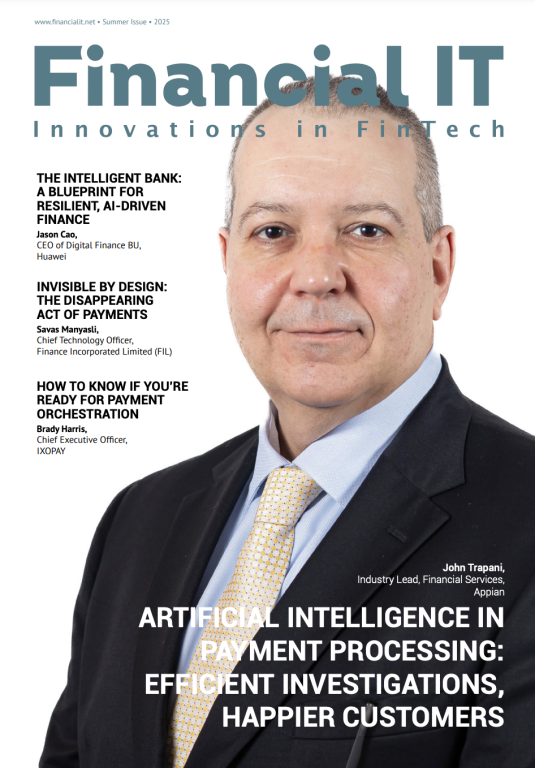Published
- 06:00 am

Gemalto, the world leader in digital security, today announced its collaboration with Caliber Public Safety (Caliber), a leading provider of public safety software in the United States, to provide law enforcement and other government agencies an efficient way to comply with Criminal Justice Information Services (CJIS) policies, ultimately heightening security. By combining Caliber's public safety expertise in records management and Gemalto's SafeNet Authentication Service, the two companies have created a strong portfolio of cloud-based identity and data protection solutions. Gemalto and Caliber's solutions allow law enforcement to rapidly deploy strong authentication technology to meet CJIS requirements and pass state audits.
When it comes to law enforcement, timely information is critical to stopping crime. Criminal Justice Information (CJI) is shared at all levels – including state, federal, and local municipal agencies – meaning that leakage of sensitive data, ranging from fingerprints to criminal backgrounds, can jeopardize efforts. The CJIS Security Policy defines requirements for sharing and protecting information, such as two-factor authentication, when accessing CJI data.
Gemalto and Caliber provide law enforcement agencies with comprehensive, easy-to-deploy CJIS advanced authentication solutions for both mobile soft tokens and physical ones. The authentication as a service approach means public safety organizations have little to no installation overhead and can deploy almost immediately. The self-service platform allows law enforcement officers to take care of ongoing token management, saving time for IT administrators, while extensive pre-configured reports provide immediate visibility and tracking of all authentication events.
"By leveraging our Public Safety Cloud infrastructure, we are able to offer powerful security and risk mitigation, while ensuring the highest levels of compliance possible." Mr. Gregg Merlihan, Senior Executive Vice President at Caliber Public Safety stated. "The technology is simple to use and its design accommodates growth and scale, along with a budget and approach to make quick and effective deployments a reality."
"We have a long history at Gemalto of working in the government space, which helps us understand the unique security needs of these agencies," said Francois Lasnier, Senior Vice President of Authentication Products at Gemalto. "Since the deadline for meeting the CJIS regulation has passed, law enforcement agencies have now started to undergo formal audits to ensure they are compliant. Gemalto's authentication solutions provide them with a rapid path to making sure they pass these audits".
Related News

Paul Dignan
Senior Systems Engineer at F5 Networks
The world of finance is changing. Consumers are becoming more demanding for ease of engagement, while financial institutions are under pressure to transform services using advanced technology. see more
- 01:00 am

1WorldSync, the leading provider of product content solutions has launched five new apps and features to enhance customers' ability to grow global cross-channel sales. The new capabilities enable more efficient content syndication and improved compliance and product transparency offerings to simplify content aggregation and exchange between trading partners.
Suppliers can now take advantage of 1WorldSync's expanded product suite:
- The Walmart App provides users a 'Content Service Provider (CSP)' API connection to Walmart Store Assortment Online (SAO), simplifying and accelerating product sellers' ability to list products on Walmart.com. The app eliminates the extra step of having to top off data in the Walmart vendor portal.
- The Lidl App enables suppliers to publish product data in the format consistent with category-specific playlists that adhere to Lidl product information requirements.
- The Amazon Vendor Central Upload allows customers to set up products based on Amazon.comrequirements and publish directly to Amazon Vendor Central. This accelerates sellers' ability to standardize their GDSN data.
- SmartLabel enhancements meet the updated requirements by the Grocery Manufacturers Association (GMA). 1WorldSync customers will benefit from a new layout of the Nutrition Fact Panel, upgraded design and improved format for a more consumer-friendly experience.
- The Recipient Catalog enables buyers to accept items from manufacturers and publish to their own digital storefronts, including products from many brands or suppliers organizing products by category or type as desired.
"As the demands of global commerce and consumers have evolved, so have the 1WorldSync product solutions" said Nick Manzo, Global Omni-Channel Lead, 1WorldSync. "This Summer release represents our commitment to continually enhance the 1WorldSync Product Information Cloud Platform, validating our customers' trust in us to manage their digital content while satisfying retailer mandates and industry regulations. Our goal with this release is to make it far simpler for our 25,000+ customers to deliver and distribute web-ready rich product to support brand integrity and sell to all commerce channels."
Related News
- 05:00 am

The Global Payments Innovation Jury today releases its 2017 Report, revealing that while Asia remains home to most payments innovation, Europe has leapfrogged Africa, North America and Latin America for the first time in nine years.
The Global Jury is a panel of 70 CEOs and senior industry executives from 37 countries across 6 continents, making it the most global body to look into payments innovation. Every two years, the Jury convenes to compile a global research report into payments and fintech innovation trends.
Regional differences
With 64 percent of the vote, Asia remains the clear leader in payments innovation, a position it has held consistently since the inaugural 2008 Jury and significantly outpacing the competition.
Chairman of the Global Payments Innovation Jury, John Chaplin, commented, “This goes beyond a ‘China effect’. Many other countries in the Asia region are modernising their payments infrastructures and creating environments that support innovation.”
Notably, for the first time in nine years, Europe has leapfrogged Africa, North America and Latin America to take second place in the ranking.
“While Europe has never been rated favourably for payments innovation in the past, the 2017 Jury sees real grounds for optimism. There is now a much more progressive regulatory environment in Europe, world-leading innovation hotspots have developed in London and Berlin and we are starting to see that consumers are more willing to give new financial service providers a go,” said John Chaplin, Chairman of the Global Payments Innovation Jury.
B2B versus B2C
The 2017 Jury also explored which payment sector offers the most profit potential for new business ventures. In developed markets, such as Europe a big majority (76 percent) see B2B investment as more likely to generate good returns than B2C, citing the consumer expectation that payment services should be free and the major marketing investment required to build a substantial user base. However, in markets such as Asia and Africa, the sheer size of the population still without access to formal financial services makes the Jury lean more towards B2C (56 percent) than B2B (44 percent).
“While B2C payments tend to get most of the industry airtime, the Jury think the smart investors in developed markets are mainly focusing on B2B payment opportunities because
of the better profit potential,” said Chaplin.
Growing importance of APIs
Addressing top industry trends, three quarters (73 percent) of the Jury believe that APIs are going to play an increasingly significant role in the payments market over the next three years.
“Payments are often a source of friction and that means lost sales for retailers and frustrated customers,” added Chaplin. “Using APIs it is much easier to integrate payments into apps so that transactions become almost automatic. The ability to make transactions “disappear” was seen by the Jury as one of the most important enablers of innovation as more and more payments come from mobile apps and Internet of Things devices.”
However, the Jury did not see APIs as a risk-free approach and voiced concerns about security risks and who gets blamed by consumers when things go wrong.
Hype awards
As in previous years, the Jury picked out the area of payments innovation that they see as most over-hyped.
“The fact that an innovation is over-hyped doesn’t mean that it doesn’t deliver benefits for the industry, rather that the claims made are exaggerated. And hype tends to lead to misallocation of investment resources,” explained Chaplin.
The Jury decided that distributed ledger technology wins the over-hype award for 2017.
“While the Jury believe that distribution ledger technology can deliver real benefits for the overall financial services business they also consider that many of the claims made about its applicability to retail payments are over the top,” added Chaplin.
Related News
- 07:00 am

SWIFT invites FinTech companies from around the world to develop new overlay services that leverage its SWIFT global payments innovation (gpi) platform. SWIFT will provide funding of up to 200,000 EUR for the two winning FinTech finalists of an Industry Challenge. The FinTech winners will work with banks on collaborative innovation concepts that solve additional industry challenges in cross-border payments on top of SWIFT gpi.
SWIFT gpi has prompted the largest change in cross-border payments over the last 30 years. As an initiative, it engages the global banking industry and solves core problems related to speed, transparency and traceability of payments. Since its launch in January 2017, gpi has dramatically improved the cross-border payments experience for corporate treasurers in over 85 country corridors. Key features of the gpi service include enhanced business rules and a secure tracking database in the cloud accessible via APIs, resulting in faster “same day credits” to end beneficiaries, transparency of fees, and end-to-end tracking of payments in real-time. A strategic roadmap includes the ability to immediately stop a payment and convey rich payment data. SWIFT gpi also explores new technology, running a Proof of Concept using distributed ledger technology to reconcile banks’ nostro accounts in real-time.
To further enhance this experience, SWIFT is now launching the gpi Industry Challenge to encourage FinTech companies to build additional innovative overlay services leveraging the gpi platform, solving incremental challenges faced by corporate treasurers. These services can include, for example, enhanced invoice presentment and reconciliation to facilitate financial supply chains, exchange of supply chain documentation to improve global trade, exchange and interactive enquiry of account and processing conditions to improve end-to-end straight through processing, and providing additional party and transaction information to support compliance and sanctions screening of cross-border payments.
Wim Raymaekers, Head of Banking Market and SWIFT gpi Programme Manager at SWIFT says: “Rather than develop solutions in silo, companies - banks and SWIFT included, should open APIs to an ecosystem of partners. There are many companies out there with good ideas. SWIFT gpi is a great innovation in itself; with this industry challenge we want to foster additional collaborative innovation, drawing the best talents and thinking to our table.”
Five FinTech companies will be invited to a gpi Industry Challenge workshop in Singapore on 13-14 September 2017, where they will receive coaching from FinTech experts and be in direct contact with 30 gpi member banks. Two FinTech winners will be selected and receive up to 100,000 EUR each to further develop their concept over a three month period with banks and SWIFT, getting exposure to the financial industry, and be presented at Sibos in Toronto in October 2017.
Kevin Johnson, Head of SWIFT’s Innotribe Innovation Programmes adds: “SWIFT is about bringing added-value to its customers in response to a rapidly changing landscape. Collaboration across stakeholders is the key to success. This challenge draws on that unique focus and demonstrates that by leveraging the SWIFT gpi platform, we can meet the challenges of the financial community, together."
Related News
- 04:00 am

TrueLayer, the fintech developer platform that provides easy access to bank APIs, has secured $3 million in series A funding. This follows a successful beta testing phase which garnered strong interest from developers including many from high growth fintechs and renowned brands. The round was led by Anthemis Group, whose partner, Yann Ranchere, will join TrueLayer’s board. Existing investor Connect Ventures, with partner Pietro Bezza, also participated in the round.
TrueLayer is an API platform that offers developers an easy way to access the bank data they need to build new financial apps and services, helping startups and banks alike to drive innovation in financial services. TrueLayer supports account verification, KYC processes, and transactional data for account aggregation, credit scoring and risk assessment.
Since the launch of the private beta in February, TrueLayer has seen hundreds of developers sign up to its service. The Series A funding will be used by TrueLayer to help the company expand its team and increase its coverage of supported banks before moving the API to general availability later in the year.
In the coming months, TrueLayer will also build out its offering as an Account Information Service Provider (AISP) and Payment Initiation Service Provider (PISP) in line with the revised Payment Services Directive (PSD2). As such, TrueLayer developers will benefit from open banking services including access to aggregated customer banking data and payment initiation while enhancing security and privacy of consumers. In addition, TrueLayer plans to roll out compliance-as-a-service features to make it easier for developers and fintechs to access bank APIs within regulatory parameters while also drastically reducing the cost of compliance and operations.
TrueLayer was co-founded by serial entrepreneurs Francesco Simoneschi and Luca Martinetti. The Silicon Valley veterans previously co-founded Staq which (acquired by Upsight) and DomainsBot, now part of the German group Sedo Holding Gmbh.
TrueLayer is available in the UK and will expand into other EU countries in 2018. The API is free to solo developers and early stage startups, with volume-based pricing and metered billing available to large applications and enterprises.
"The future of bank APIs isn’t yet straightforward; TrueLayer was born with a mission to remove the barriers that exist between consumers and innovative financial products. PSD2 will provide a clear regulatory framework and enhanced consumer protection. But although it will help to create greater collaboration and innovation, there are still many technology challenges that the industry needs to solve. Frictionless user experience and security are paramount going forward,” said Francesco Simoneschi, CEO and co-founder of TrueLayer.
“TrueLayer is committed to delivering the best possible user and developer experience, reducing the barrier-to-entry for fintechs that want to leverage the opportunities of open banking while still providing a secure and streamlined experience for consumers. The new funding will help us to accelerate the growth of our team, expand our product coverage and reach into markets."
Yann Ranchere, partner at Anthemis Group, said: “We are excited to support the TrueLayer team in their ambition to bring developer-driven solutions to the emerging banking API ecosystem. Europe is at the forefront of new regulation driving access to banking infrastructure and will be home to a growing number of startups and corporations looking to build on top of this API layer. We believe TrueLayer is uniquely positioned to provide the best secure, reliable and scalable technical platform and consumer-driven privacy frameworks for the industry. We look forward to supporting TrueLayer in building the leading European API platform for fintech developers.”
Pietro Bezza, Managing Partner Connect Ventures, said: “We were the first to back Francesco and Luca and the accelerated progress achieved by the company is a confirmation of the need for TrueLayer’s product in the market and the strength and fit of the founding team. Banking services are long overdue a shakeup and the first step is empowering fintech applications to connect with banks through a superior developer experience. TrueLayer does this and much more.”
Related News
- 06:00 am

OpenLink, the global leader in trading, treasury and risk management solutions for the energy, commodities, corporate and financial services industries, today announced that its newly developed solution, Asset Transaction Management (ATM), is now live at three leading energy clients – including Williams Midstream Partners and SemGroup – and open to the market.
Many asset operations are increasingly spinning off from the marketing or trading arms of the business, and companies are transferring their assets to master limited partnerships or independently operated units for financial benefits. To manage this, asset operators need a system that specializes in managing shipper nominations, allocations and invoices, in addition to a customer service web portal that delivers enhanced value propositions to their customers.
Traditionally, operator processes have been hindered by disparate systems, manual spreadsheets, emails and phone calls. OpenLink developed ATM in direct response to market demands by providing a completely integrated platform that frees up resources to focus on higher value activity.
“With new pipelines and terminals coming online and ever-increasing competition, it’s more important than ever for asset operators to ensure their nomination processes, allocations and transactions are accurate and fast and that they are providing the online services their customers desire,” said Rich Grossi, CTO at OpenLink.
Joyce Johnson, Distribution and Scheduling at Williams Midstream Energy, said, “ATM has given our customers specific information on a real-time basis. It has provided data that they previously had to request via reports or from one of our commercial representatives. The automated workflow has streamlined Williams’ back-office processes. Employees are more productive and have better information to make decisions.”
Organizations quickly see the benefit of operational efficiency that ATM provides. Charles Smith, Senior Business Analyst at SemGroup, explained, “ATM simplified the process for us to collect and report shipper nominations. Our business is more streamlined with a single source for all nominations, allowing us to capture all pipeline tariffs and fees in a single system.”
ATM serves all companies that operate pipelines, terminals, blending facilities, fractionation facilities and other types of assets and charge fees for services rendered. The platform functions via a unique web portal that caters to the needs of both asset operators and their customers within a singular, intuitive system. It centralizes the collection of data and provides timely and accurate inventory reporting for midstream and downstream operators while providing their customers with superior service along the transaction lifecycle.
“Automation is key to the technology behind ATM,” Grossi said. “We worked closely with our clients to build an industry-leading solution that allows asset owners to improve the efficiency of product distribution and deliver outstanding customer service.”
Related News
- 02:00 am

Quantave, the only complete trade life-cycle infrastructure for digital assets, officially entered their closed beta-testing phase today. The infrastructure opens the digital assets market to institutional traders and investors, transforming the way they engage and transact with this dynamic market, whilst ensuring the safety and security of their assets. Quantave is now rigorously testing the model with its initial partners.
The existing trade-lifecycle infrastructure that underpins this nascent market has, until now, been largely unsuitable for institutional investors. Accessing liquidity has been complex due to the fragmented nature of the market requiring repetitive onboarding and capital management processes.
Trading volumes in digital assets, such as Bitcoin and Ether, are experiencing meteoric growth. Spurred by the growing interest in blockchain technology, global digital asset trading volumes now regularly peak at more than $2bn* per day—compared to less than $50mn* just four years ago. This rapid growth is attracting the attention of institutional investors and traders, keen to include this asset class amongst their investment strategies.
Quantave’s solution simplifies access to liquidity in these markets by providing a robust and secure trade-lifecycle structure that is tried and tested in traditional markets. For the first time, institutional participants such as family offices, fund managers, hedge funds, FX brokers, market makers and authorised participants will be able to access multiple broker-dealers and exchanges via a unified gateway, reducing the complexity facing new entrants to the market and resulting in a deeper pool of liquidity.
To reassure investors that they can engage with this market with confidence, Quantave’s infrastructure incorporates independent, EU regulated intermediaries to provide a clear distinction between the "execution" and "asset safeguarding" functions to remove potential conflicts of interest.
Paul Gordon, CEO, Quantave, said: “Traditional markets have evolved with key roles isolated from each other with the objective of reducing risk and creating healthy competition. We aim to emulate this with our infrastructure. Both institutional investors and liquidity venues will benefit; investors will be able to transact confidently across multiple venues through independent asset safeguarding and execution functions, ultimately reducing risk. Liquidity venues will benefit from an increase in order-flow as investors are able to enter into the market via a proven channel. This is a very exciting time for this industry and marks a first step to accessing and unlocking liquidity in this increasingly sought after asset class. ”
Related News
- 07:00 am

Nuance Communications has launched Nina Coach, a solution to help organisations train, deploy and improve virtual assistants faster than ever before by tapping into artificial intelligence and leveraging existing human knowledge.
Virtual assistant (VA) usage is on the rise, with Gartner predicting that chatbots will power 85% of all customer service interactions by the year 2020*. Just as students learn the fundamentals through basic schooling and then move onto college to concentrate on a focused area, the next generation of virtual assistants need to become smarter and more specialised in this same way. This optimisation is now possible through Nina Coach, which equips the VA with pre-existing knowledge such as chat transcripts and industry-specific dialogue from the start for a faster time to market. With today’s announcement, Nina will leverage AI and human assistance from live engagements to constantly improve the VA’s knowledge and natural language understanding (NLU).
Through Nina Coach, when the virtual assistant has low confidence or does not know an answer to a consumer’s question, a live chat agent seamlessly enters the conversation, within the same engagement window, and has visibility into the transcript and history of the conversation. The human assistant can then either choose the best answer from a list of choices identified by the virtual assistant, or type in a separate response. As a next step, the action is recorded, analysed, and folded back into Nina’s semantic brain. This learning loop makes the NLU technology smarter and more accurate over time, so the virtual assistant knows the answer on its own moving forward.
“There is simply no one-size-fits-all when it comes to offering an intelligent virtual assistant for customer service and simple question/answer bots no longer make the cut. Instead, these customer service virtual assistants, or chatbots, need to be smarter and capable of answering whatever question is posed to them regarding a particular domain,” said Robert Weideman, executive vice president and general manager, Enterprise Division, Nuance. “Adding cognitive, data-driven machine learning through Nina Coach will enable organisations to more quickly and accurately understand consumers’ intents and tailor content from the start. These more accurate and intuitive conversations build brand loyalty, reduce churn, and ultimately help organisations to obtain a faster ROI.”
Related News
- 07:00 am

Tsys announced today that it has extended its payments agreement with Tesco Bank to continue supporting the bank’s credit card business in the UK.
Under the agreement, TSYS will provide full customer account management services on its industry leading TS2® platform.
Tesco Bank aims to be the bank for people who shop at Tesco and provides 8.1 million accounts and policies to customers. The bank offers a full range of core retail banking and general insurance products to meet the needs of Tesco shoppers.
“TSYS has proven itself as the right partner for Tesco Bank as we continue to look for new and innovative ways to grow and improve our credit card business,” said David McCreadie, managing director, Tesco Bank. “With their outstanding client service and deep understanding of our business, we’re confident that they will continue to help us provide a seamless experience to our customers”.
“This is a great example of how TSYS values long term client relationships,” said Rob Hudson, group executive of TSYS International. “Tesco’s market-leading retail experience together with TSYS’ payments expertise has proven to be a dynamic combination in providing an outstanding cardholder experience.”









